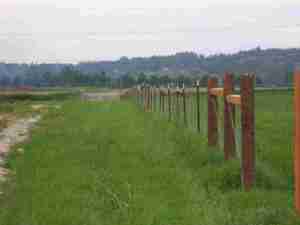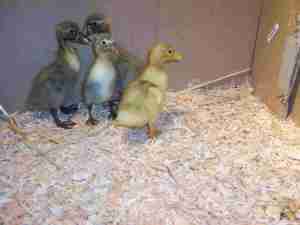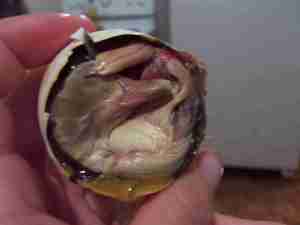I wish I could find more information about duck color genetics that pertain to the breeds I have, Magpies and Runners. My reference book has a lot of info on other breeds, but not these. Here are the two Silver Magpies, the drake is the one with more color on his back:
Can you see how they are kind of grubby? I am vexed by this, when I bought them last summer at the county fair poultry show, they were perfectly white and pristine. Now, not only are they stained, but their wing and tail features are scrappy. I work hard to keep their pen clean (as clean as possible given that they are ducks and enjoy making everything muddy). I tried switching their food. My next guess is that they need their own duck-sized bathtub, so they can clean more effectively via swimming. They have a large, horse-size rubber pan in their pen, with a float valve to keep it full, and they could get in that to bathe. But they don’t seem to anymore; so I have to solve this problem next.
And finally, the lone Black Runner hen (her mate died after a serious leg injury). She is a looker, I think! Kirk was the one who wanted these, he thought they looked sleek; I think I’m starting to agree.
So, I think all four babies are some combination of these three ducks. The two dark babies are growing fast, and look very robust; I suspect they are the cross-breds. Perhaps they have “hybrid vigor”?
I wasn’t going to keep cross-breds originally, I like the idea of having fine-looking purebreds that produce expected and consistent results. But, I’m now realizing that I’d either have to pick one breed and stick with it or keep all the ducks contained in small pens so they could not cross. I enjoy different breeds, and may not want to stick to one. And, I like to let them free-range, so then can’t control who’s getting together with whom. So, my plans may change; I may just stick with good laying breeds, and let them cross freely, selecting for the most robust ones that are nice-looking, also suitable for training dogs (and maybe eating?).






